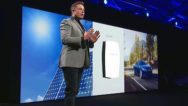
Off-grid couple takes on Supreme Court and wins
Victory!
Not just for the couple who won the right to use water to power their home, but for many others in a similar situation.
Nestled in Colorado’s vast 125 miles long San Luis Valley, off-grid couple Chuck and Barbara Tidd sought to use a creek on their property to source energy from for their solar panels. Their self-sufficient decision erupted into a legal battle that went as high as to the Colorado Supreme Court.
In a radio interview the couple explains how the Rocky Mountains have a ‘desert feel’ to them, and any water is scarce, which is one of the reasons the lawsuit was sparked.
The couple live in a home they built themselves on the mountain tops, with jaw-dropping panorama views of the Valley. When they first moved in, they were told it would cost $100,000 to run power lines to their home which they declined, so they are 100% off the grid. They get their drinking water from the springs and their electricity from a solar array, which was fine until it was cloudy. With no chance of getting lines put in and no back-up for the solar power, they were stuck.
Until they looked at hydropower alternatives.
Now, there was an irrigation ditch that ran through their property. The only problem was that it belonged to another family (The Frees) down the hill, who disapproved of the Tidds using their water and the way they went about it.
“My understanding—incorrect understanding—was that you start working on it and then you file. Wrong.” Barbara explains “Chuck started digging and was going to lay some pipe and then he called the irrigators up to look at it and they said, “Don’t touch my ditch.”
There’s a Colorado Water Law that the Frees used to defend their case, known as the “Prior Appropriation System” that basically says “First in time, first in right.” It started back in early gold mining days and essentially allowed the first guys in dibs water from a stream before anyone else could use it.
What the Tidds wanted to do seemed more than fair, they wanted to run water through a pipe to generate power and then return every drop back to where they got it from. But the case got brought up to ‘Water Court’ where the Tidds won….. but the case was far from settled for the Frees. They challenged the judge’s decision and took it up to Supreme Court arguing that the Tidds could not use the water because it already belonged to them and they should have the right to use it before anyone else.
Chuck wouldn’t back down though, he exclaimed in an interview and in court that: “water can be used many ways. It’s a usufructuary right to use that water, meaning you don’t own it. They use the term ‘use the molecules of water’ before anybody …
